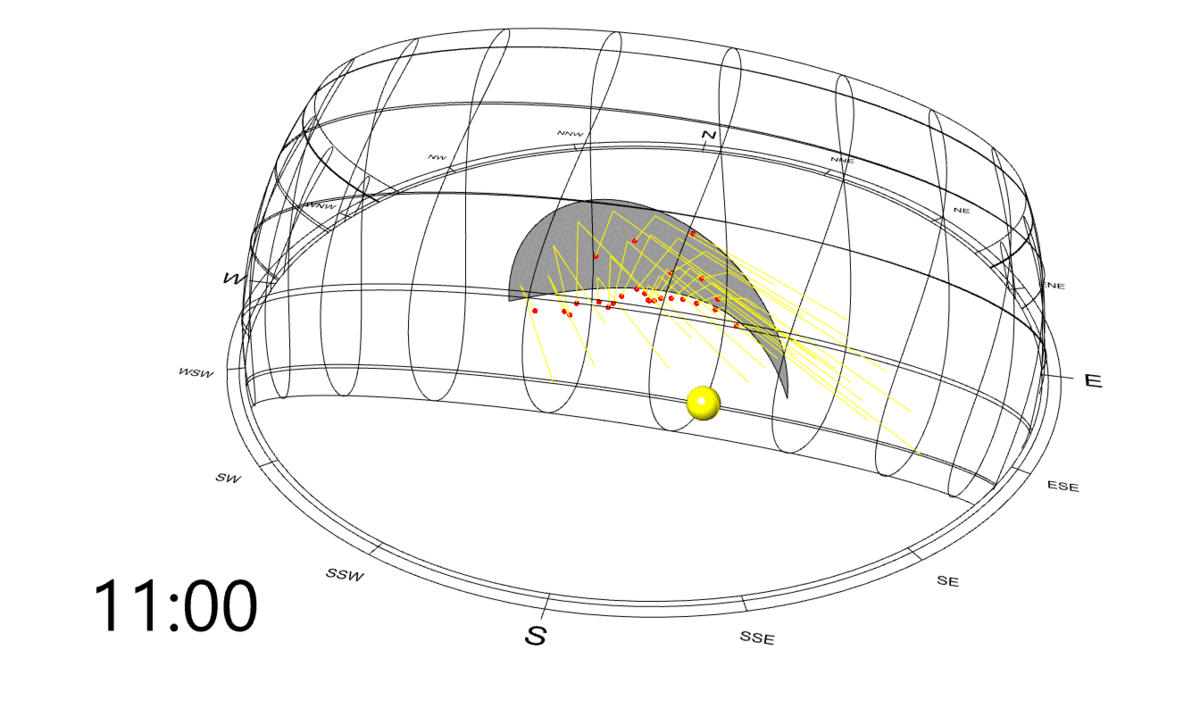I’ve done something similar and it worked.
Another approach is to run two Simulation, one with a reflectance set very low on the PV.
And then compare those.
I’ve done something similar and it worked.
Another approach is to run two Simulation, one with a reflectance set very low on the PV.
And then compare those.
Thank you for your response! Could you please elaborate? do you mean one with little reflectance and another with the actual PV reflectance and then compare both?
When I set the -ab to 0 the irradiance results just do not make sense. So I believe that the workflow will be lower reflectance with -ab 1 and higher reflectance with -ab 2?
Thanks
Hi.
I would not change -ab to do this, as you will loose a lot of energy from bounces.
just run one with -ab over 3 with the correct reflection, and another with a very low reflection. And then compare those.
This should give you a sensible answer, if i understand what you are working on correctly.
We usually rely Veiling Luminance where I work. you could use the 500 cd/m2 as an upper threshold.
My issue is mainly that we cannot run annually for the VL. it only works for DGP which is as you know already, suitable for indoor only.
I have been looking for the same thing for long. I use the Veiling luminance as a metric to identify glare in a PIT. However, since this cannot be processed annually, I do a raytracing study, and I add set the receptor (viewer i.e., window, or vehicle driver…) as part of the context to include it in the calculations. Then after a loooong annual run, depending on how big is the reflecting surface (e.g., facade), I pick the vectors that reaches the receptors (which could be too 100s of vectors), and I find the time and date when it occours. in the end I select few times to test VL using PIT.
It is such a long and painful process, and each assessment I seed to do alot.
I am soory I can not share an example due to company policy. but hopefully you could benifit from this methodology.
And feel free to share if any better way…
Sorry for the late reply. The best answer for this:
Is to ask people on the Radiance forum:
I can’t remember who is the author of the Radiance evalglare executable that is used to calculate all of the glare metrics that we currently expose. But that is who you need to find in order to ask if it’s possible for evalglare to also calculate these metrics. If you search through the Radiance forum, I’m sure you’ll find more discussions about this.
@LiamRuvio , by this:
Do you mean something like what the LB Surface Ray Tracing component does? You plug in reflective geometry and the sun vector and it shows you the path of the rays:

You can always edit the source code of that component if you want to do more refined studies that eliminate certain rays. It’s all running using geometric calculations with RhinoCommon SDK. So it’s pretty fast to use in Grasshopper compared to sending stuff off to Radiance.
Hi, I’m recently working on a glass wall glare simulation but I’m a ladybug beginner, can you please refer to the ladybug component to get this image and how it’s connected? Thank you very much!